Overcoming blame culture: key strategies to catalyse maternal and perinatal death surveillance and response
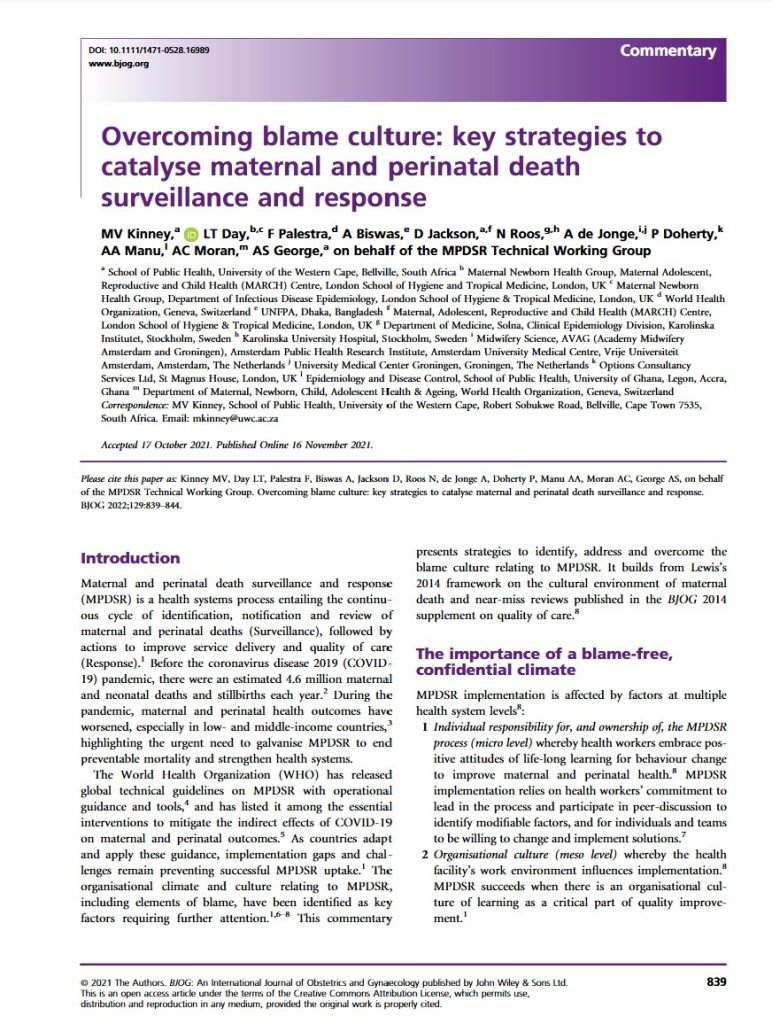
This commentarypresents strategies to identify, address and overcome the blame culture relating to MPDSR. It builds from Lewis’s2014 framework on the cultural environment of maternaldeath and near-miss reviews published in the BJOG 2014supplement on quality of care.
Analysing and using routine data to monitor the effects of COVID-19 on essential health services -Practical guide for national and subnational decision-makers
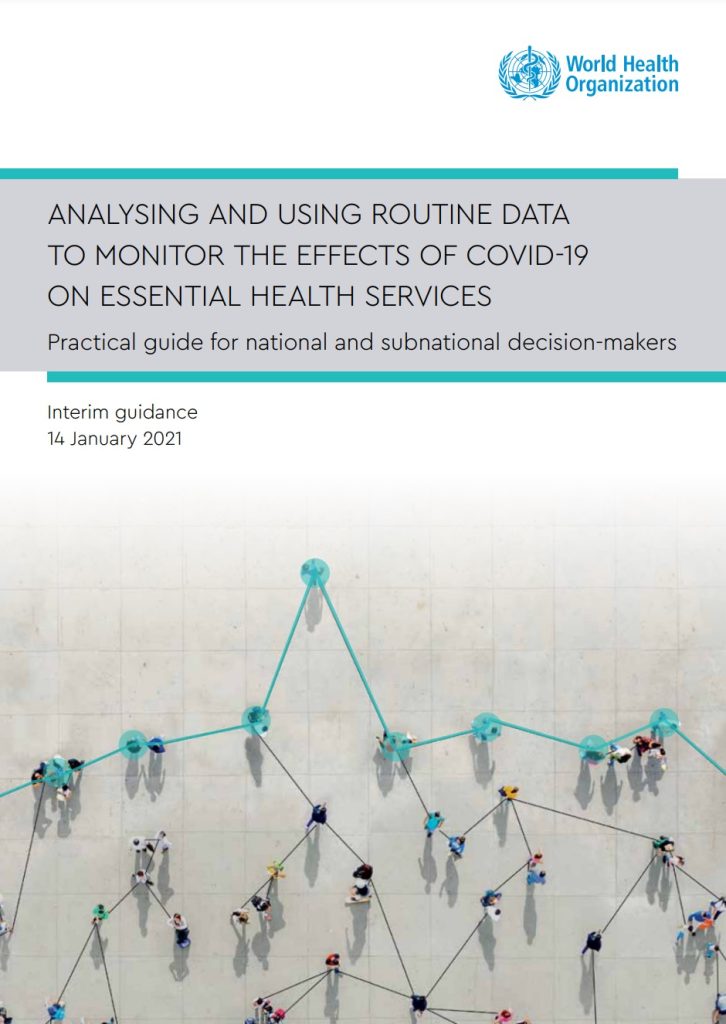
This practical guide can be used to help countries monitor and analyse the impact of COVID-19 on essential health services to inform planning and decision-making. It provides practical recommendations on how to use key performance indicators to analyse changes in access to and delivery of essential health services within the context of the COVID-19 pandemic; […]
The WHO Global Strategic Directions for Nursing and Midwifery (2021-2025)

This document presents evidence-based practices and an interrelated set of policy priorities that can help countries ensure that midwives and nurses optimally contribute to achieving universal health coverage and other population health goals.
Maternal and perinatal death and surveillance and response: Materials to support implementation materials to support implementation (2021)

This document is a practical step by step guidance, relevant to establish a framework to assess the burden of maternal deaths, stillbirths and neonatal deaths, including trends in numbers and causes of death and on how to link maternal and perinatal death reviews.
MPDSR Capacity building package (2021)
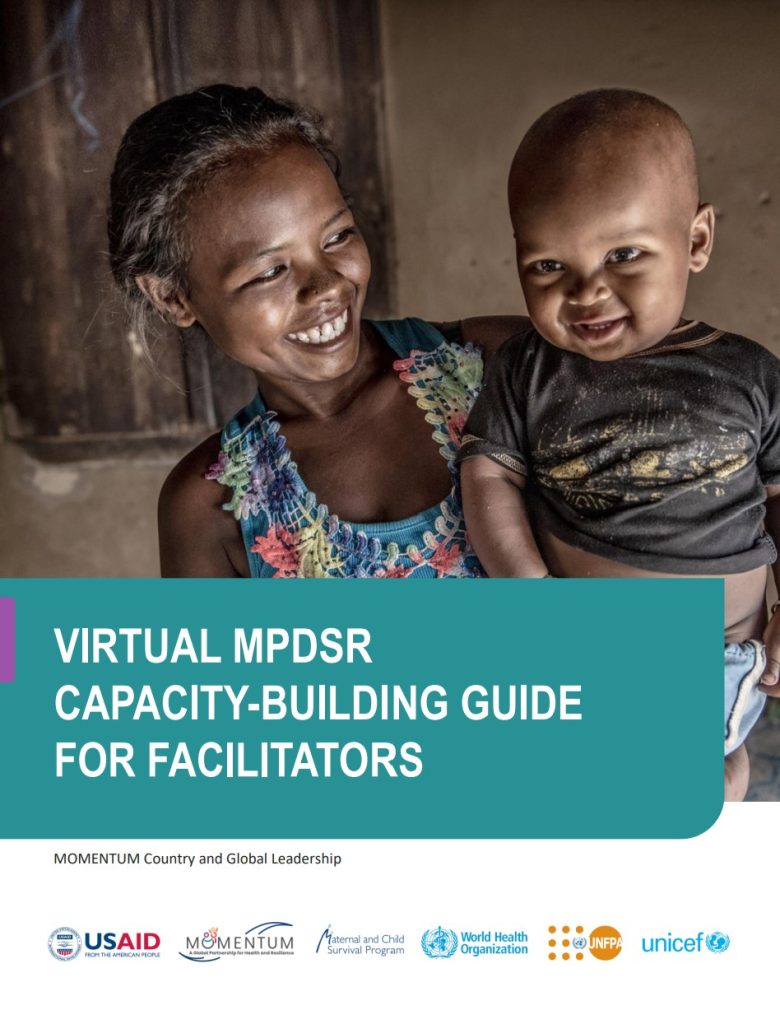
This document is developed to build the knowledge and skills of the facilitators to conduct a virtual workshop when in-person training is not possible.
A Network for Improving Quality of Care for Maternal, Newborn and Child Health

This brief provides an overview of the Network for Improving Quality of Care for Maternal, Newborn and Child Health and outlines how quality of care strategies in the provision and experience of care can reduce preventable maternal and newborn mortality and stillbirths. Nine countries – supported by the World Health Organization (WHO), the United Nations […]
WHO Knowledge brief : Implementation of MPDSR as part of quality of care efforts for maternal and newborn health: considerations for synergies and alignment
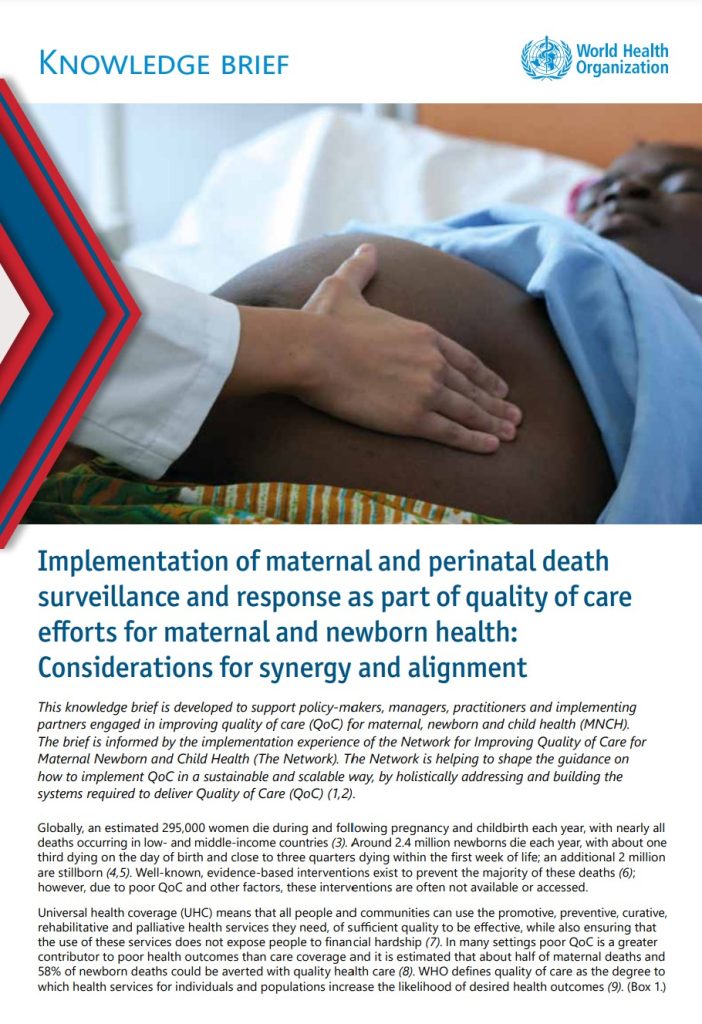
This knowledge brief is developed to support policy-makers, managers, practitioners and implementing partners engaged in improving quality of care for maternal, newborn and child health. The brief is informed by the implementation experience of the Network for Improving Quality of Care for Maternal Newborn and Child Health.
Knowledge Brief: Implementation of maternal and perinatal death surveillance and response as part of quality of care efforts for maternal and newborn health: Considerations for synergy and alignment
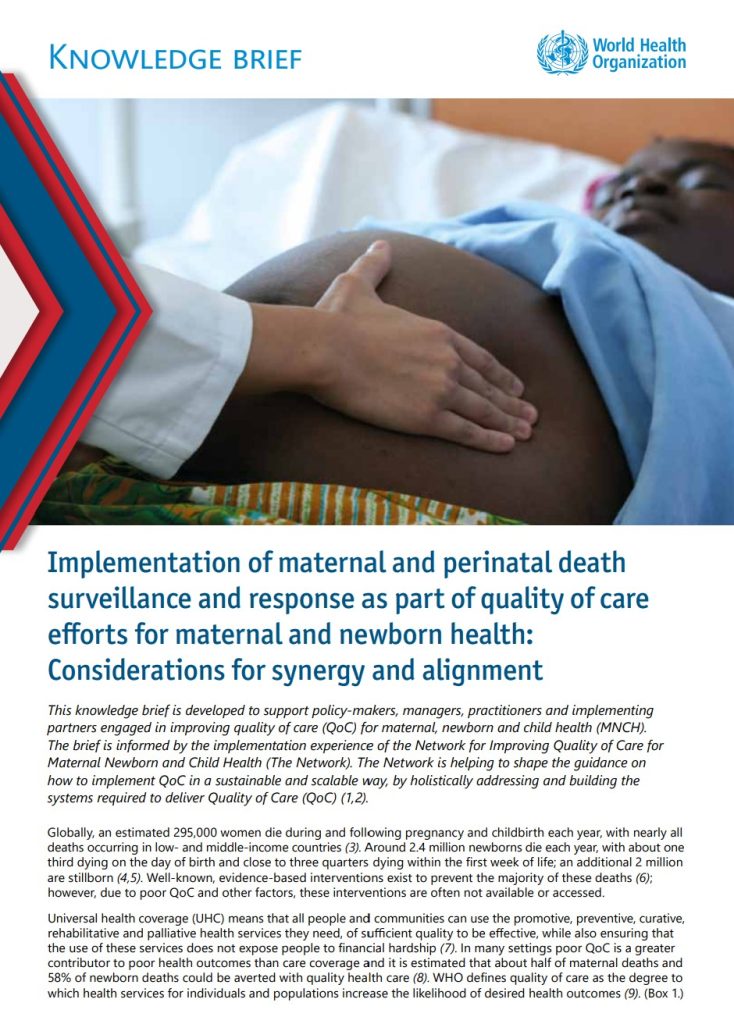
This knowledge brief is developed to support policy-makers, managers, practitioners and implementing partners engaged in improving quality of care for maternal, newborn and child health (MNCH). The brief is informed by the implementation experience of the Network for Improving Quality of Care for Maternal Newborn and Child Health.
Experiences of private sector quality care amongst mothers, newborns, and children in low- and middle-income countries: a systematic review
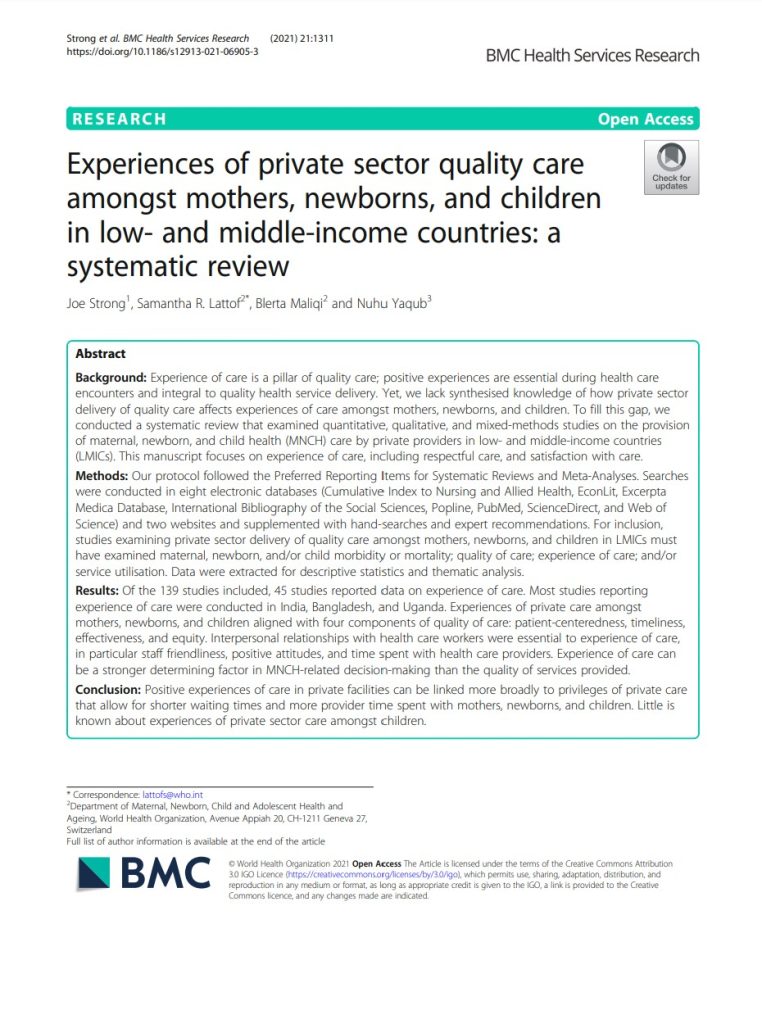
This systematic review examines quantitative, qualitative, and mixed-methods studies on the provision of maternal, newborn, and child health care by private providers in low- and middle-income countries. This manuscript focuses on experience of care, including respectful care, and satisfaction with care.
The Network for Improving Quality of Care for Maternal, Newborn and Child Health: Evolution, Implementation and Progress 2017-2020 report
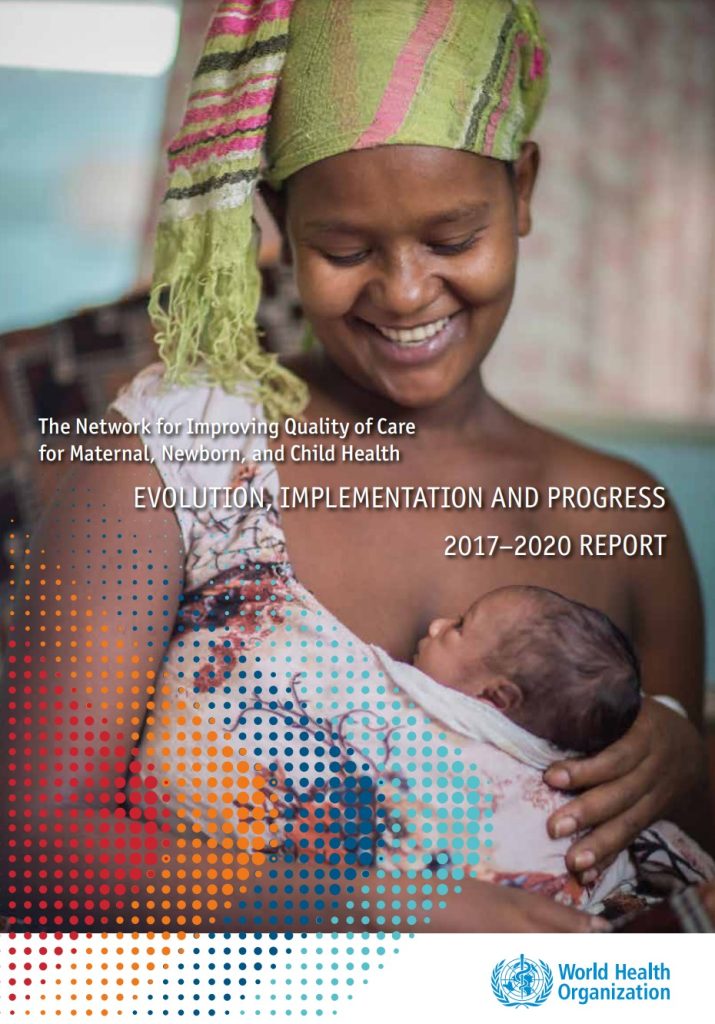
This report provides an account of how countries are progressing in achieving the Quality of Care Network goals, and identifies critical levers of change that need to be considered by countries interested in implementing quality care at scale.